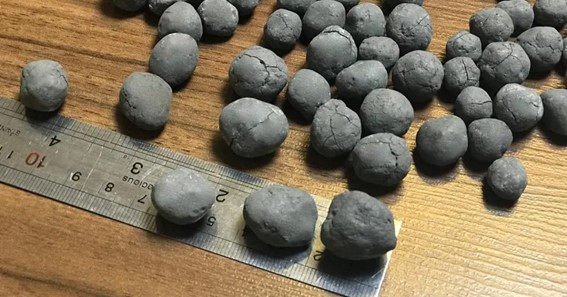Are you curious to know what is sponge iron? You have come to the right place as I am going to tell you everything about sponge iron in a very simple explanation. Without further discussion let’s begin to know what is sponge iron?
In the realm of metallurgy, various production processes have revolutionized the manufacturing of metals. One such innovative process is the production of sponge iron, which has gained significant popularity in recent years. In this blog post, we will delve into the concept of sponge iron, its production process, and its wide range of applications.
What Is Sponge Iron?
Sponge iron, also known as direct-reduced iron (DRI), is a high-purity, solid form of iron produced by the reduction of iron ore in the presence of a reducing agent. Unlike traditional iron production methods that involve the use of a blast furnace, sponge iron is produced through a direct reduction process, offering distinct advantages in terms of energy efficiency and environmental sustainability.
The Production Process:
The production of sponge iron involves several key steps:
-
Raw Material Preparation:
Iron ore, which typically contains a combination of iron oxides such as hematite (Fe2O3) and magnetite (Fe3O4), is selected as the primary raw material. The ore is carefully mined, crushed, and screened to achieve the desired size distribution.
-
Feeding the Furnace:
The prepared iron ore is then fed into a rotary kiln or fluidized bed reactor, along with a suitable reducing agent such as coal, natural gas, or syngas. The reducing agent initiates the chemical reaction that reduces the iron oxides to metallic iron.
-
Reduction:
Within the kiln or reactor, the iron ore is exposed to a controlled temperature and atmosphere. The reducing agent reacts with the oxygen in the iron ore, causing a reduction reaction. This results in the formation of sponge iron, which consists of porous iron particles with a spongy-like structure.
-
Cooling and Compaction:
After the reduction process, the sponge iron is cooled and solidified. It is then typically compacted into briquettes or pellets to facilitate handling, transportation, and storage.
Applications Of Sponge Iron:
-
Steelmaking:
Sponge iron serves as a crucial raw material in steelmaking. It can be used as a substitute for scrap iron in electric arc furnaces (EAFs) or as a supplement in blast furnaces. The high purity and consistent composition of sponge iron make it an ideal choice for producing high-quality steel.
-
Foundry Applications:
Sponge iron is also utilized in foundries for the production of cast iron. It offers advantages such as improved melt yield, better control over chemical composition, and reduced casting defects, leading to enhanced casting quality and efficiency.
-
Chemical Processes:
Sponge iron finds application in various chemical processes. It can serve as a reducing agent in the production of hydrogen, ammonia, and other chemicals. Additionally, sponge iron catalysts are used in a range of chemical reactions, including the synthesis of methanol, Fischer-Tropsch synthesis, and hydrogenation processes.
-
Renewable Energy Storage:
The unique characteristics of sponge iron make it a potential candidate for renewable energy storage. Its porous structure allows for high surface area exposure, making it suitable for applications such as hydrogen storage, gasification, and as a catalyst in energy storage systems.
Conclusion:
Sponge iron, or direct-reduced iron, is a versatile metal produced through a direct reduction process that offers significant advantages in terms of energy efficiency, environmental sustainability, and material purity. With its diverse applications in steelmaking, foundries, chemical processes, and renewable energy storage, sponge iron has become an essential component of modern industrial processes. The widespread adoption of sponge iron showcases its ability to meet the evolving needs of various industries, while also contributing to the reduction of environmental impact in metal production.
FAQ
What Is Sponge Iron In Simple Words?
DRI, also known as sponge iron, is the product of reducing iron oxide in the form of iron ore and steel plant wastes into metallic iron, below the melting point of iron and typically in the range of 800–1200 °C.
What Is The Use Of Sponge Iron?
Sponge iron is used in the iron and steel industry as a substitute for scrap in induction and electrical arc furnaces. Over the years, the shortage of expensive melting scrap has made sponge iron a significant raw material for manufacturing high quality steel.
Why Is It Called A Sponge Iron?
WHY IS IT CALLED SPONGE IRON? Iron oxide ores taken out from the Earth are allowed to absorb carbon by a reduction process. In this natural reduction, as the iron ore is warmed up with carbon, it results in a surface with hole marks, hence the name “Sponge Iron”.
What Is The Difference Between Iron And Sponge Iron?
Sponge Iron is a purer form of iron with a lower carbon content compared to Pig Iron. It has a higher melting point, greater resistance to oxidation, and is more malleable and ductile. Pig Iron, on the other hand, is more brittle, has a higher carbon content, and is less pure.
I Have Covered All The Following Queries And Topics In The Above Article
What Is Sponge Iron Used For
What Is Sponge Iron In Hindi
What Is A Sponge Iron
What Is The Sponge Iron
What Is Sponge Iron Class 10
What Is Sponge Iron Plant
What Is Iron Sponge
What Is Metallization In Sponge Iron
What Is The Use Of Sponge Iron
What Is The Meaning Of Sponge Iron
What Is Fem In Sponge Iron
What Is Sponge Iron?
What Is Pig Iron And Sponge Iron
What Is Sponge Iron
What is the difference between sponge iron and normal iron
What is DRI & sponge iron?
